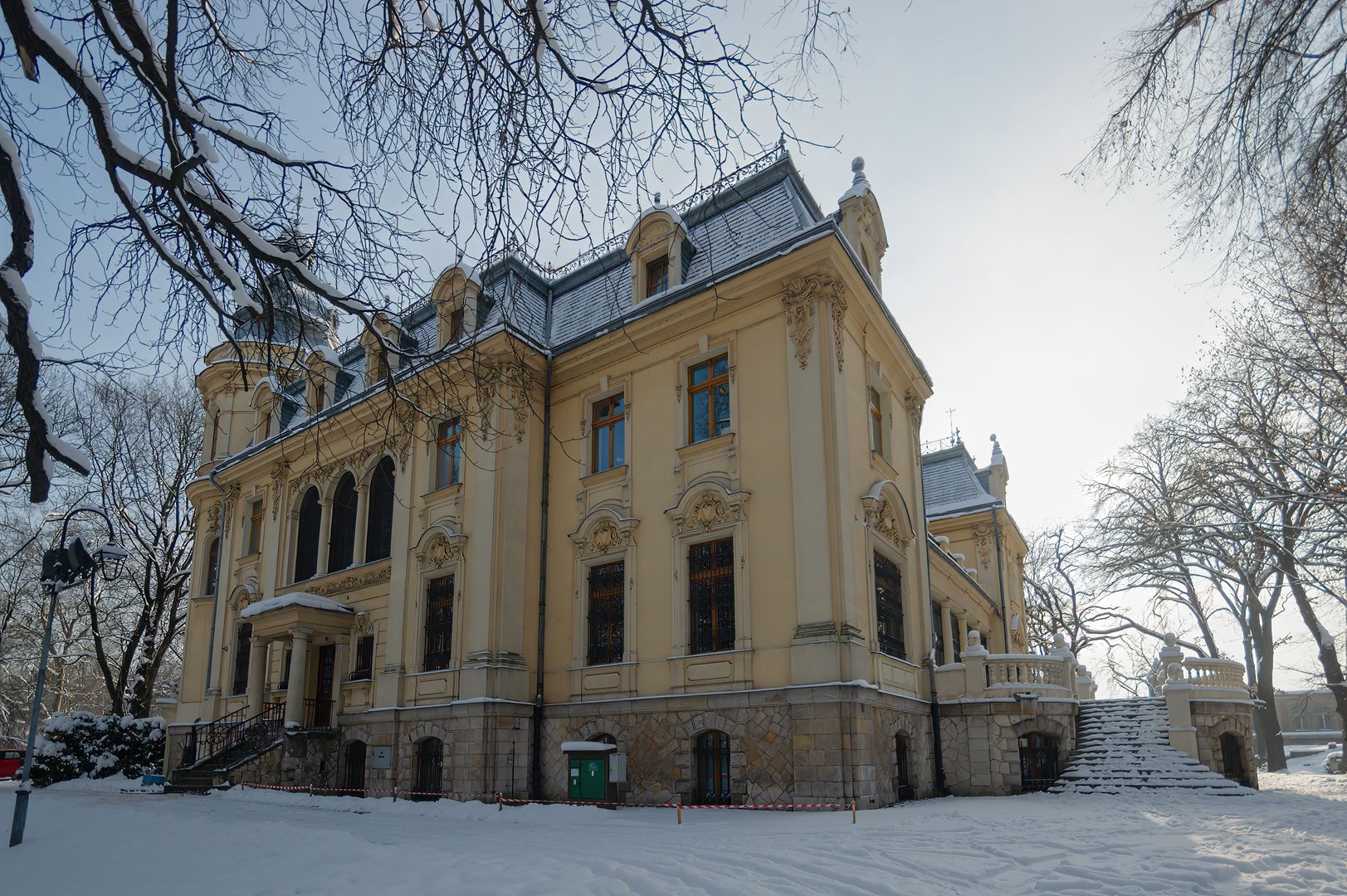Ernst Schön Palace in Sosnowiec
6.91

Overview
The Neo-Baroque Schön Palace in Sosnowiec, built in 1885 by Ernst Schön, is an example of the opulent architecture characteristic of this style. Designed on a quadrilateral plan with towers at three corners, the palace has four stories and a mansard roof, while the onion-shaped domes of the towers give it a distinctive appearance. The façades, adorned with abundant stucco work, feature motifs of oak leaves and the monogram "S," with their rich decorative elements also including rocaille panels, garlands, human faces, and cartouches. Originally, the main façade faced the railway side, but in the 1940s, it was reoriented to the southern side, where the orangery was then located. The interior of the palace, tastefully furnished, was divided into spaces intended for social gatherings, residential quarters, as well as guest rooms and servants' quarters. After the decline of the Schön family, the building took on new functions and now serves as a museum, a ceremonial hall for the Civil Registry Office, and a restaurant. The surrounding park, located at the junction of the Pogoń and Środula districts, also adds to its charm and appeal, serving as a meeting place for residents and tourists. Among the interesting facts are the artistic stained-glass windows decorating the interiors and the palace’s role as an element of local culture and history, having witnessed many important events in the region.
Location
You can also find here:
2025 Wizytor | All Rights Reserved
